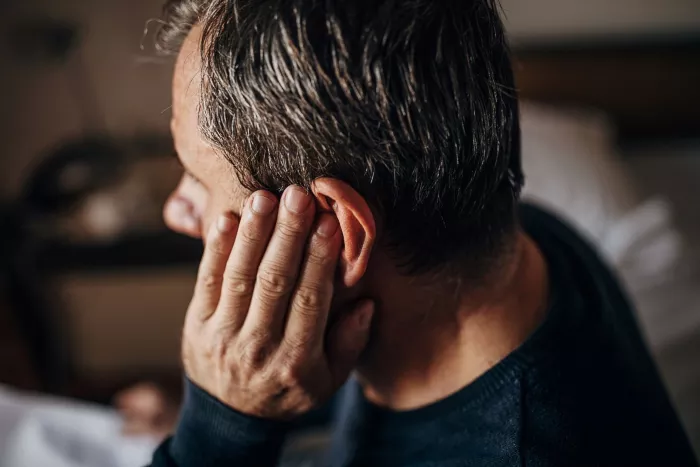Negative pressure in the ear can be uncomfortable and sometimes painful. It happens when the pressure inside your ear doesn’t match the pressure outside. This imbalance can cause a blocked or full feeling, muffled hearing, or even pain.
In this article, we’ll explain what causes negative ear pressure and how to relieve it.
What Is Negative Ear Pressure?
Your ears rely on balanced pressure to work correctly. The Eustachian tube, a small passage connecting your middle ear to your throat, helps regulate this pressure. When the tube doesn’t open properly, pressure builds up inside the ear, creating a vacuum-like effect.
This is called negative ear pressure. It can happen suddenly or develop over time.
Common Causes of Negative Ear Pressure
Several factors can lead to negative pressure in the ear. Here are the most common ones:
1. Eustachian Tube Dysfunction
The Eustachian tube helps equalize ear pressure. If it gets blocked or doesn’t open correctly, pressure builds up. This often happens due to:
Colds or allergies – Swelling and mucus can block the tube.
Sinus infections – Inflammation affects the tube’s function.
Smoking – Irritation can cause long-term tube problems.
2. Rapid Altitude Changes
When you go up or down quickly (like in an airplane or driving through mountains), air pressure changes faster than your ears can adjust. This can cause:
Ear popping – Your ears try to equalize pressure.
Pain or discomfort – If they can’t adjust fast enough.
3. Ear Infections
Middle ear infections (otitis media) can cause fluid buildup, leading to pressure changes. Children often get these infections because their Eustachian tubes are smaller.
4. TMJ Disorders
Problems with the jaw joint (temporomandibular joint or TMJ) can affect ear pressure. The joint is close to the ear, so inflammation or misalignment may cause ear discomfort.
5. Excessive Earwax
Too much earwax can block the ear canal, trapping air and creating pressure. This is easy to fix with proper ear cleaning.
6. Barotrauma
This is ear damage caused by sudden pressure changes, often from:
Scuba diving – Deep water increases pressure.
Loud explosions – Shockwaves can harm the ear.
Symptoms of Negative Ear Pressure
You might experience:
- A plugged or full feeling in the ear.
- Muffled hearing or temporary hearing loss.
- Pain or discomfort, especially when yawning or swallowing.
- Popping or clicking sounds when moving the jaw.
- Dizziness in severe cases.
How to Relieve Negative Ear Pressure
If your ears feel blocked, try these methods:
1. Swallowing or Yawning
This helps open the Eustachian tube naturally. Chewing gum or sucking on candy can encourage swallowing.
2. Valsalva Maneuver
Pinch your nose, close your mouth, and gently blow out. This pushes air into the Eustachian tubes to equalize pressure.
3. Warm Compress
Applying warmth near the ear can help relax muscles and open the Eustachian tube.
4. Nasal Decongestants
If congestion is the problem, a decongestant spray or pill may help reduce swelling.
5. Earwax Removal
If earwax is blocking your ear, use ear drops or see a doctor for safe removal.
6. Stay Hydrated
Drinking water keeps mucus thin, preventing blockages.
When to See a Doctor
Most cases of negative ear pressure go away on their own. But see a doctor if you have:
- Severe pain that doesn’t improve.
- Hearing loss lasting more than a few days.
- Fluid draining from the ear (could be an infection).
- Frequent pressure problems (may need further treatment).
Preventing Negative Ear Pressure
You can reduce the risk by:
- Avoiding rapid altitude changes when possible.
- Using earplugs during flights or diving.
- Treating allergies or colds promptly.
- Not smoking, as it irritates the Eustachian tube.
Conclusion
Negative ear pressure is usually temporary and treatable. Understanding the causes can help you prevent and manage it. If home remedies don’t work, consult a doctor to rule out infections or other issues.
Related topics:
Will Insurance Cover Otoplasty?
What Is The Best Age For Otoplasty?
Did the Hollywood Star Will Smith Get Ear Surgery?

